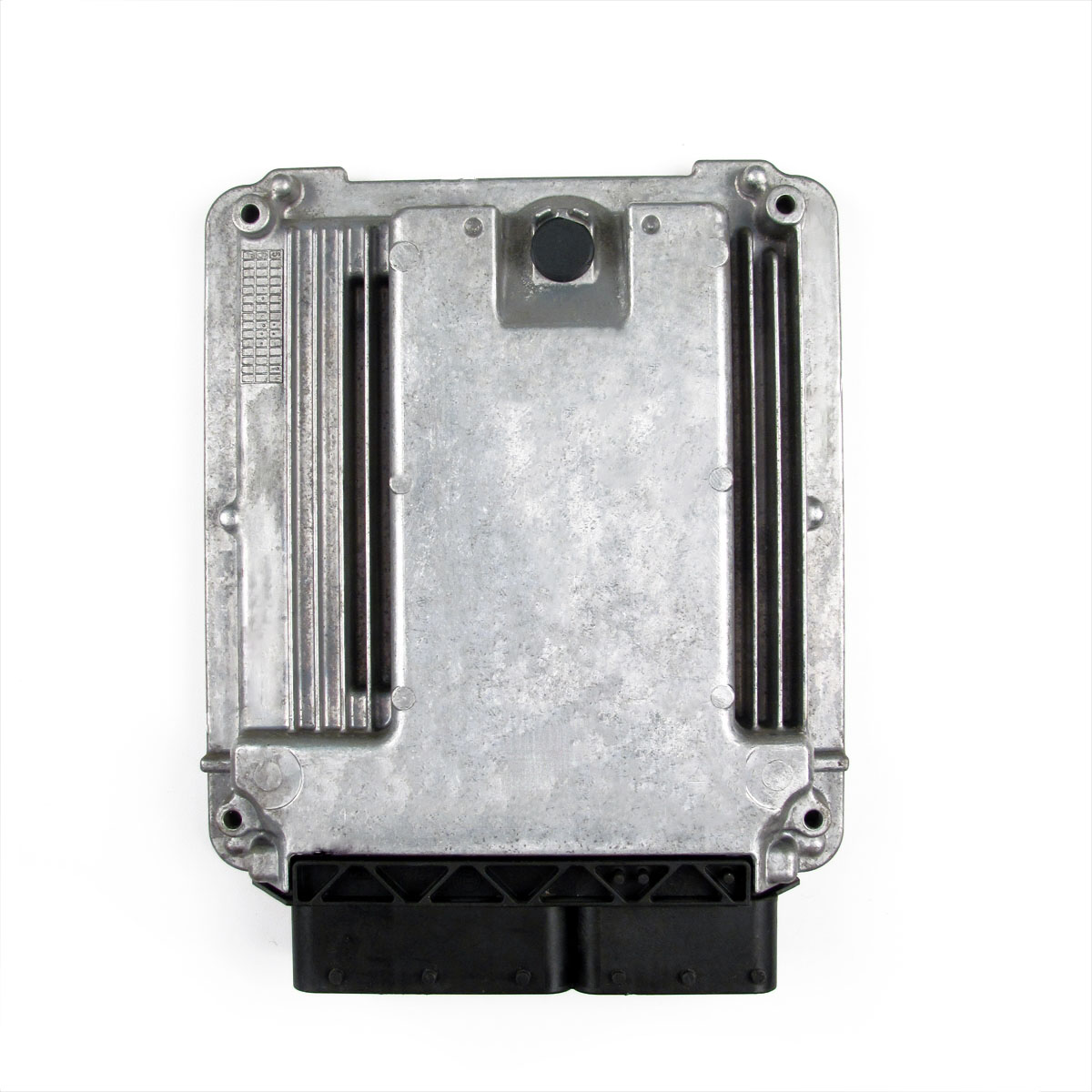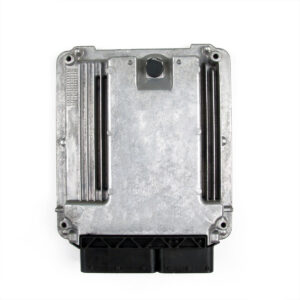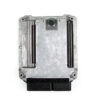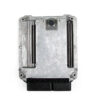Restore Your SUV’s Brainpower and Performance
If your 2009 Chevrolet Traverse is suddenly stalling, shifting erratically, or showing a persistent Check Engine Light, the problem often points directly to a failing Engine Control Module (ECM). As the central computer for your vehicle, a faulty ECM can cause a cascade of frustrating and hard-to-diagnose issues. This isn’t just an inconvenience; it affects your vehicle’s reliability, fuel economy, and safety. We offer a dependable and straightforward solution: a genuine GM Engine Control Module, part number 12630594, delivered to your door fully programmed to your vehicle’s specific VIN.
Case Study: A Tricky Diagnosis
I remember a 2009 Acadia—which uses the same platform and ECM as your Traverse—that came into my shop with a complaint of intermittent stalling at stoplights and harsh 2-3 shifts. The owner had already replaced spark plugs and a coil pack with no success. No hard codes were stored, only a history code for ‘lost communication with TCM.’ After checking the wiring, we focused on the ECM, which is located behind the fan shroud on these SUVs. Heat cycling in that area is brutal. We swapped in one of our pre-programmed modules, and the difference was immediate. The engine idled smoothly, and the transmission shifted like new. The latest GM software we flash onto these units often contains critical updates that address these exact drivability concerns, saving the customer from endless diagnostic rabbit holes.
Is Your Traverse Showing These ECM Failure Signs?
A failing ECM can manifest in many ways. As a technician with over two decades of experience, I’ve seen it all. Here are the most common symptoms that point to a needed replacement:
- ✔ Persistent Check Engine Light with codes like P0601 (Internal Control Module Memory Check Sum Error) or P0606 (ECM/PCM Processor Fault).
- ✔ The engine cranks but refuses to start.
- ✔ Unexplained drops in fuel efficiency.
- ✔ Rough or unstable idling.
- ✔ Hesitation or stumbling during acceleration.
- ✔ Erratic or harsh automatic transmission shifting.
- ✔ Communication errors with other vehicle modules (U-codes).
Ordering our 2009 Traverse Engine Control Module is the most efficient way to resolve these problems. We take the guesswork out of the repair by flashing the module with the latest GM-approved software calibrated precisely to your vehicle’s VIN. This ensures all systems, from fuel delivery to transmission control, operate exactly as the factory intended.
A Straightforward Guide to Your ECM Installation
One of the biggest benefits of our service is that it eliminates the need for a tow to the dealership. With basic tools, a DIY enthusiast can handle this replacement. Here’s a general guide:
- Safety First: Disconnect the negative terminal from your vehicle’s battery and wait at least 15 minutes to allow all systems to discharge.
- Locate the ECM: On the 2009 Traverse, the ECM is mounted behind the engine’s cooling fan shroud. You may need to remove the upper portion of the shroud for access.
- Disconnect Connectors: Carefully unclip and disconnect the electrical wiring harnesses from the old module. Inspect the connectors for any signs of corrosion or damage.
- Remove the Old Module: Unbolt the old ECM from its mounting bracket.
- Install the New Module: Mount your new, pre-programmed 2009 Traverse Engine Control Module in place and securely tighten the bolts.
- Reconnect Everything: Plug the wiring harnesses back into the new ECM until they click securely. Reassemble the fan shroud and reconnect the negative battery terminal.
- Perform Security Relearn: Most GM vehicles of this era require a simple security relearn procedure to sync the new ECM with the anti-theft system. This typically involves turning the key to the ‘ON’ position for 10-15 minutes, then off, and repeating two more times before starting the engine. Instructions are readily available online for your specific model.
Verified Compatibility for Your GM Vehicle
This module is a direct replacement for several part numbers and fits a range of popular GM vehicles. Please verify your model and engine below. This part is compatible with part numbers 12623325, 12628387, 12605672, 12630594, and 19300016.
- 2009 Acadia – Electronic Control Module; (behind fan shroud)
- 2009 Buick Enclave – Electronic Control Module; (behind fan shroud)
- 2009 Saturn Outlook – Electronic Control Module; (behind fan shroud)
- 2009 Chevrolet Traverse – Electronic Control Module; (behind fan shroud)
- 2008-2009 Cadillac CTS – Electronic Control Module; (RH front engine compartment), 3.6L, VIN V (8th digit)
- 2008-2009 Cadillac STS – Electronic Control Module; (RH engine), 3.6L
{
“@context”: “https://schema.org”,
“@type”: “FAQPage”,
“mainEntity”: [
{
“@type”: “Question”,
“name”: “What does ‘programmed to my VIN’ mean?”,
“acceptedAnswer”: {
“@type”: “Answer”,
“text”: “It means we load the module with the specific software and calibrations for your exact vehicle using your 17-digit Vehicle Identification Number (VIN). This ensures perfect compatibility with your engine, transmission, and options, making the installation process much simpler than buying a blank module.”
}
},
{
“@type”: “Question”,
“name”: “Do I need any special tools for installation?”,
“acceptedAnswer”: {
“@type”: “Answer”,
“text”: “No expensive diagnostic scanners are needed for programming since we handle that for you. You will only need basic hand tools like a socket set to access and swap the module. The only post-installation step is a simple key-cycle security relearn procedure.”
}
},
{
“@type”: “Question”,
“name”: “My original part number is 12623325. Will this part work?”,
“acceptedAnswer”: {
“@type”: “Answer”,
“text”: “Yes. This ECM, part number 12630594, is the designated service replacement for several older part numbers, including 12623325. It is fully compatible and contains the most current software available.”
}
},
{
“@type”: “Question”,
“name”: “Why is providing my VIN so important?”,
“acceptedAnswer”: {
“@type”: “Answer”,
“text”: “Your VIN allows us to access the correct GM factory software file for your vehicle’s specific configuration. Without it, the module would not be able to communicate properly with the other computers in your Traverse, leading to a no-start condition or other serious issues.”
}
},
{
“@type”: “Question”,
“name”: “What causes these ECMs to fail?”,
“acceptedAnswer”: {
“@type”: “Answer”,
“text”: “In my experience, the most common causes of failure for these modules are heat and vibration. Being located behind the fan shroud exposes the ECM to constant temperature cycles and engine vibrations, which can degrade internal electronic components and solder joints over time.”
}
}
]
}



